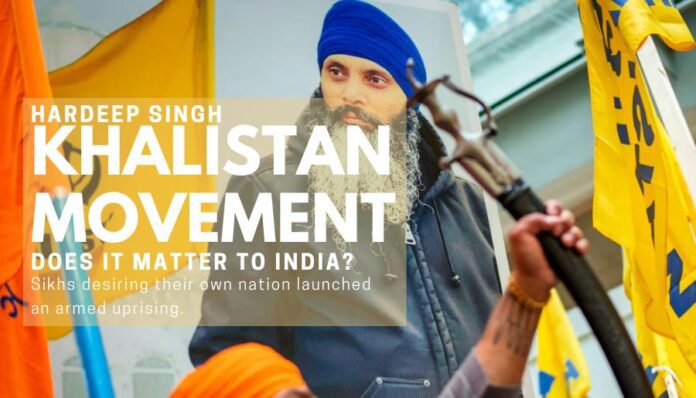Khalistan Sparks Clash in Canada-India Relations
Recent assassination of a senior Sikh separatist leader in June and Prime Minister Justin Trudeau’s advice to tread carefully when dealing with Indian government operatives have exacerbated relations between India and Canada. This article explores the nuances of the diplomatic disagreement between India and Pakistan, paying special attention to the conflict’s historical background, the Sikh diaspora, and the changing dynamics between the two countries.
Historically Speaking, the Sikh Separatist Movement
The Sikh separatist movement may be traced back to 1947, when India and Pakistan gained their freedom. The goal of the movement is to create Khalistan, an autonomous Sikh state distinct from India. The Punjab region is dominated by Sikhs, who make up about 2% of India’s total population. There has been a persistent call for Khalistan, literally “the land of the pure,” most notably during the insurgency in Indian Punjab in the 1970s and 1980s.
The Khalistan Movement from India’s Standpoint
India is quite concerned that the Khalistan movement poses a threat to their national security. In 1984, when Prime Minister Indira Gandhi ordered the troops to invade the Golden Temple, one of the bloodiest fights broke out. Sikhs all around the world were outraged by this operation. Later, her Sikh bodyguards tragically murdered her. Sikh extremists were blamed for the 1985 Air India explosion that killed 329 people. Punjab was deeply scarred by the insurgency, which claimed the lives of thousands of people.
Khalistan Today: The Current Situation
While the Khalistan movement has lost steam in India, it is still supported by a small but vocal minority of Sikhs living in the United States, Canada, the United Kingdom, and Australia. Recent events have made everyone more worried. Fears of further bloodshed in Punjab were stoked by the April arrests of self-styled preacher Amritbull Singh and other Sikh separatists. Also, India has accused Canada of promoting Sikh separatist violence due to a parade float that depicted the killing of Indira Gandhi.
India’s Concerns in the Current Diplomatic Impasse
Further infuriating India are the periodic demonstrations and damage by Sikh separatists at Indian diplomatic offices in Canada, Britain, the United States, and Australia. Canadian officials have been condemned by Indian diplomats for their inaction in the face of Sikh militancy and Khalistani harassment of Indian officials. During a G27 summit, Indian Prime Minister Narendra Modi also voiced his worry to Canadian Prime Minister Justin Trudeau regarding recent Sikh protests.
Canada’s Reaction and the Effects on Trade
Canada, on the other hand, has criticized ongoing trade pact talks with India. Mary, Canada’s Minister of Trade, had to cancel a trade mission because Ottawa is looking into the slaying of a Sikh leader in British Columbia and the possible participation of the Indian government. The diplomatic impasse persists, and both countries are treading carefully.
Related Article: Canada’s Accusations Against India in the Hardeep Singh Nijar Case
Conclusion
International relations are notoriously difficult to manage, as evidenced by the diplomatic tensions between India and Canada over the Khalistan question. Finding a solution to this disagreement remains difficult as both countries deal with historical grievances, security concerns, and trade interests. For the sake of regional peace and prosperity, it is crucial that they improve communication and look for areas of agreement to fortify their bilateral connections.

